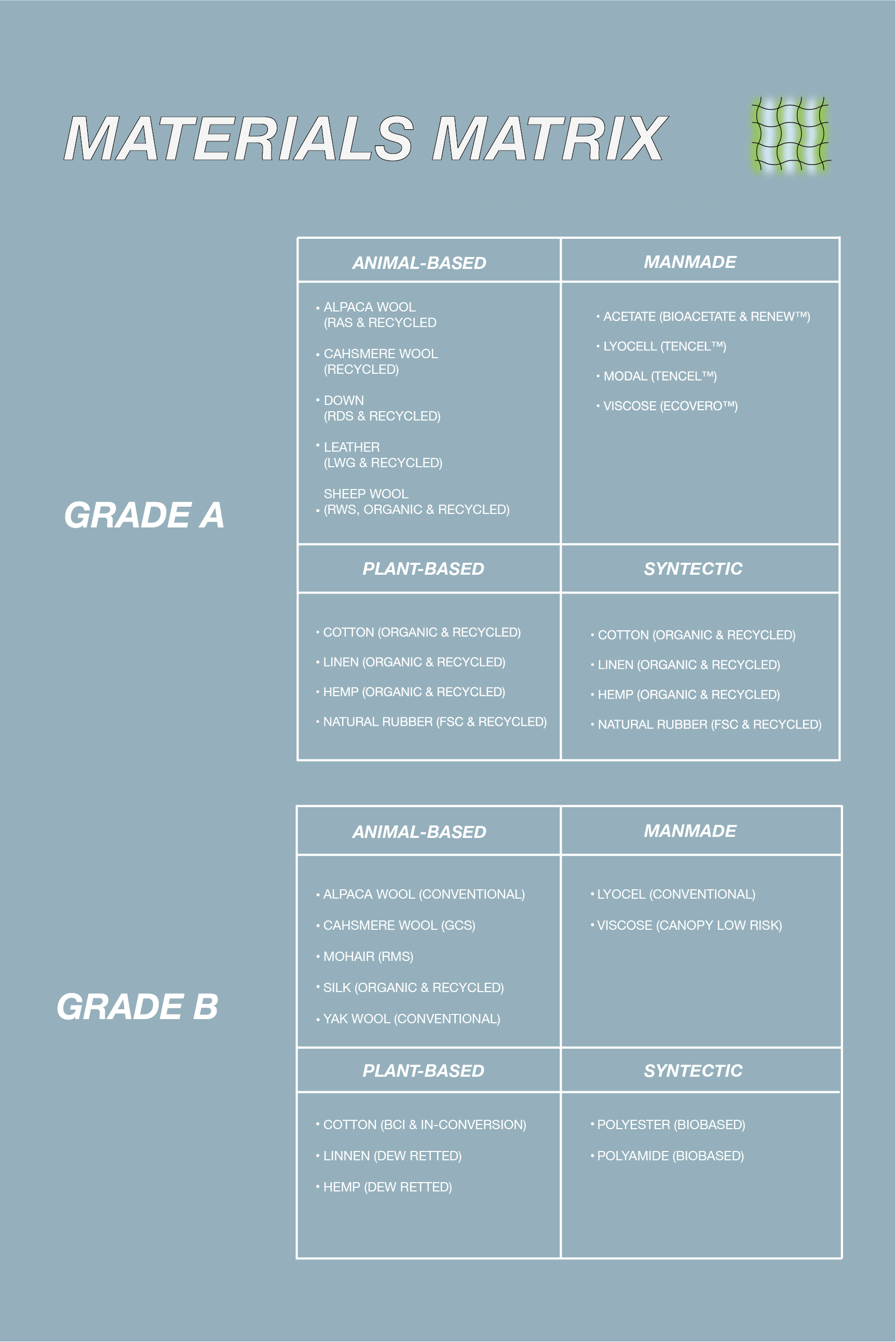OUR PREFERRED MATERIALS
Sustainable Development Goal 12 consumption and production patterns
The choice of materials significantly impacts product lifetime and environmental footprint. In our dedication to Sustainable Development Goal 12, we handpick each material based on functionality, durability and environmental footprint to create responsibly made-to-last products that are gentle on the planet. As of 2021, we used 56% of preferred materials.
The 5 Criterias for a Preferred Material
The definition of a responsible material is complex and inconclusive. Therefore, we have defined a list of preferred materials we consider the better choice - a list which we constantly revise and update. Based on 5 criterias, we define our preferred materials:

Preferred Materials Matrix
Our materials are divided into 4 grades. Grade A and Grade B are classified as our Preferred Materials, whereas Grade C and Grade D constitute conventional and banned materials.
GRADE A - Our classification of the most responsible materials with the lowest environmental impact.
GRADE B - Our classification of a better material choice with a lower environmental impact and supports social development.
GRADE C - Our classification of conventional materials, which we are aiming to reduce and replace with our preferred materials (e.g. conventional cotton)
GRADE D - Our classification of materials that we have banned the use of and will never allow in our products (e.g. fur)